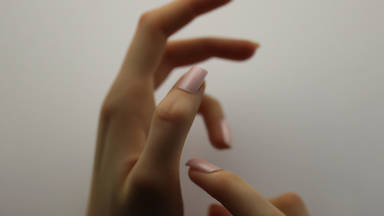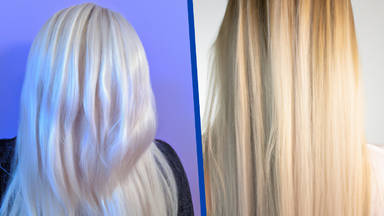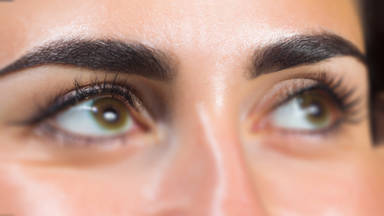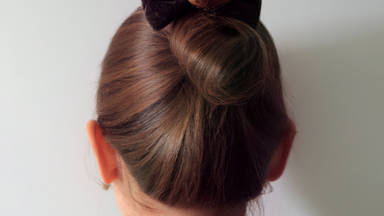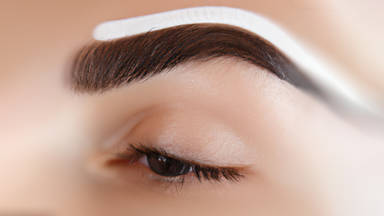
Micro-Scalp, or Scalp Micro-Pigmentation (SMP), is a relatively new micropigmentation technique. In micro-scalp, tiny dots of pigment are injected just below the surface of the skin to mimic very short hair. This gives the appearance of hair stubble just beneath the surface of the skin. This article examines a set of microscalping methods.
The scalp consists of the area of the head beginning at the hair growth line above the forehead and ending above the neck at the back. The outermost layer of the scalp is where hair grows.
Microscalp is a medical branch of micro-pigmentation in which a pigmentation expert tries to conceal the person's hair growth defects such as local baldness or pattern baldness, as well as concealing scars from surgeries, birthmarks, burns, or any other type of imperfection the person might like to hide.
To determine the micro-pigmentation color type suitable for the person, we must have a clear understanding of the nature of the person's scalp skin type. We must use glycerine-based colors on dry skin and water-alcohol-based colors on oily skin to reduce the color loss after washing.
We must also consider the person's skin type when selecting a color. We should also consider the color loss that occurs after he or she bathes after three days. Choosing the color should be done in such a way that after this color loss happens, it matches the natural color of the person's hair.
Remember that the color you choose will blend with the natural skin tone and will change after application. Most often, the color changes to a gray or cold tone after application, which is disappointing to the person. Hence, In order to choose the right pigmentation color, the expert must understand the color spectrums.
When performing a MicroScalp, the hand movement and angle play a major role.
Since the scalp is round, the angle between your hand and the cartridge can dramatically affect the results. Incorrectly angled hands and cartridges may cause dark and light pigments to show on the scalp. They may also cause color diffusion and lack of pigmentation. Thus, pressure and angle of the hand play an important role in obtaining satisfactory results with a unified pigmentation, which resembles natural hair growth.
All the parts of your hand, except the two fingers holding the cartridge, should be fixed while you apply the pigmentation, to avoid unbalanced hand movements. You can use your hand as a foundation and move your fingers to touch the skin in an angle of 90 degrees.
The color must be allowed enough time to penetrate the skin as this is crucial for the pigmentation process. The overall depth of penetration is based on the skin type and its ability to absorb pigmentation. A pigmentation done using this method can last up to ten years.
After you've applied a few pigmentation points to the skin, you need to clean the area with a serum and determine if the skin can accept the pigments. A result of this test can provide you with information about the depth of penetration. Some skin types are thicker and require deeper penetration to apply pigmentation.
Anesthetics can be applied before and during the process to reduce pain, and the correct angle of the cartridge during the process can contribute to reducing pain as well. The person needs not to be concerned about pain because all the necessary steps have to be taken by the pigmentation expert to keep the procedure as comfortable as possible.
A major advantage of micro-scalp procedures, aside from their cosmetic benefit, is their medical benefits. By using this method on the skin, you're stimulating the tissue. This stimulation will increase collagen levels in the area and improve tissue health. Additionally, this stimulation can promote hair growth.
It is important for the pigmentation expert to pay attention to the natural hairline of the individual. Each hairline is different, and pigmentation should be applied in a way that complements the natural hairline. People may have round hairlines or angled hairlines. It is important to apply MicroScalp half a centimeter after the hairline begins and not to apply the hachures too closely together because it will make the area appear darker than it actually is. This blading technique is used to make the work more efficient and natural looking. It is the best technique to use if you have reduced hair volume across the head, to apply pigmentation points on the scalp.
Micro rollers are also used in the microscalp procedure to apply pigmentation. In this technique, a number of needles are attached to a roller, and when the roller is used on the area, these needles will penetrate the skin simultaneously, speeding up the process.
Things to watch for after micro-scalping
You should not take a shower for three days after your MicroScalping procedure. Do not wear a hat or hairpiece for a week after undergoing this treatment. Gentamicin or A&D vitamin ointment should be used on the area. Do not apply too much ointment since the scalp is usually oily anyway. Sunlamps should not be used for tanning and direct sunlight should be avoided.
Colors used, skin types, ages, and environmental circumstances all affect the average lifespan of this process. MicroScalp is not permanent and cannot last forever, but it can last between one and ten years if done properly.

